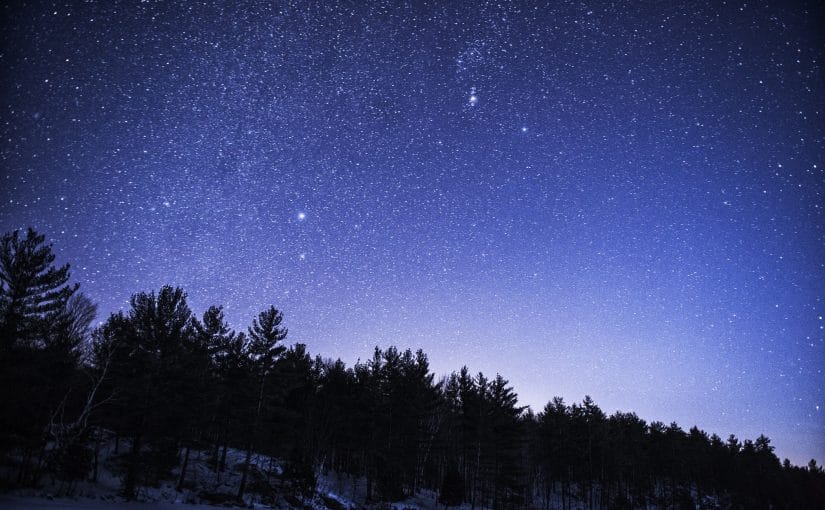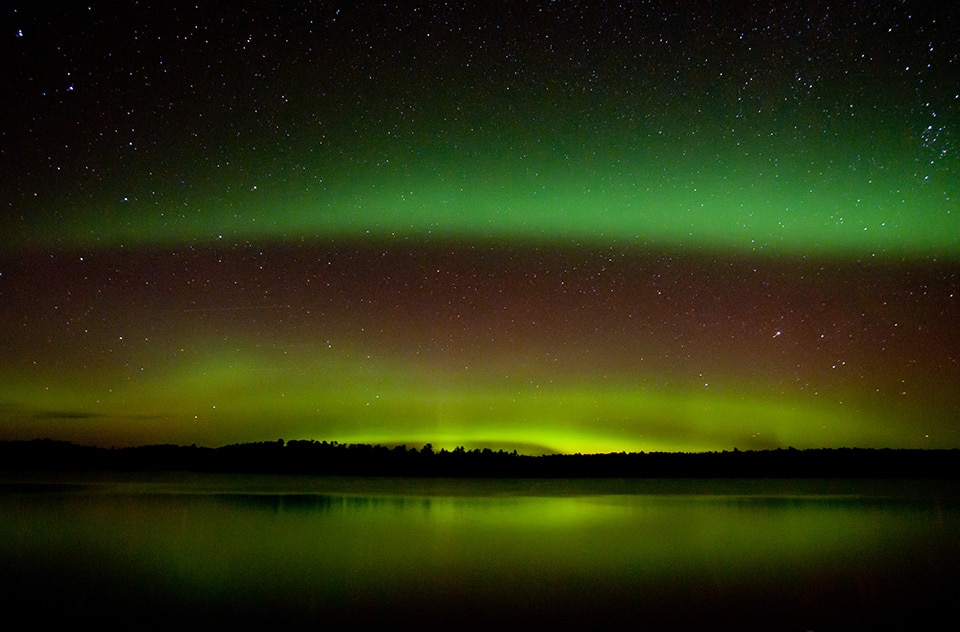
The planet Earth offers breathtaking beauty, interconnected ecosystems, and vast natural resources — it’s also a vantage point to see the incredible universe above our heads. While much of the world is affected by light pollution, the millions of acres of public lands on the Minnesota-Ontario border still boast dark nights, and skies filled with stars.
April 19-26 is International Dark Sky Week, a worldwide “celebration of the night.” This year includes new videos each day on YouTube and ideas for activities to do at home. Social media users can take a picture of the night sky from their neighborhood and share it with the hashtags #LookUpTogether and #NightSkyAtHome.
“Right now, families around the globe find themselves spending many hours at home together,” said Ruskin Hartley, the International Dark Sky Association’s executive director. “It’s a perfect time to reconnect with the night sky.”
The night sky offers many wonders: brilliant stars, the sprawling Milky Way, a revolving cast of visible planets, and perhaps the most loved and wondrous sights: the Aurora Borealis. Particularly in the Quetico-Superior’s latitudes, the northern lights are a major attraction.
Aurora awe
The aurora borealis is created when highly charged electrons from solar wind enter the Earth’s upper atmosphere, encountering atoms of oxygen and nitrogen high above the ground. This process releases photon energy in the nitrogen and oxygen atoms, producing the aurora. Green and red lights come from electrons colliding with oxygen up to 150 miles above the Earth. Blue and purple come from striking nitrogen atoms up to 60 miles high.
Wilderness author and advocate Sigurd Olson described the northern lights in his first collection of essays, one of his most well-loved works, The Singing Wilderness. In the essay “Northern Lights,” Olson described skating on fresh lake ice under a dazzling night sky.
“The lights of the aurora moved and shifted over the horizon. Sometimes there were shafts of yellow tinged with green, then masses of evanescence which moved from east to west and back again. Great streamers of bluish white zigzagged like a tremendous trembling curtain from one end of the sky to the other.”
Today, Minnesota and parts of the Boundary Waters region are promoting the dark skies and aurora borealis to help attract tourists. Promoters call northern Minnesota the best place to see northern lights in the lower 48 states — after our current ‘stay at home’ restrictions are lifted.
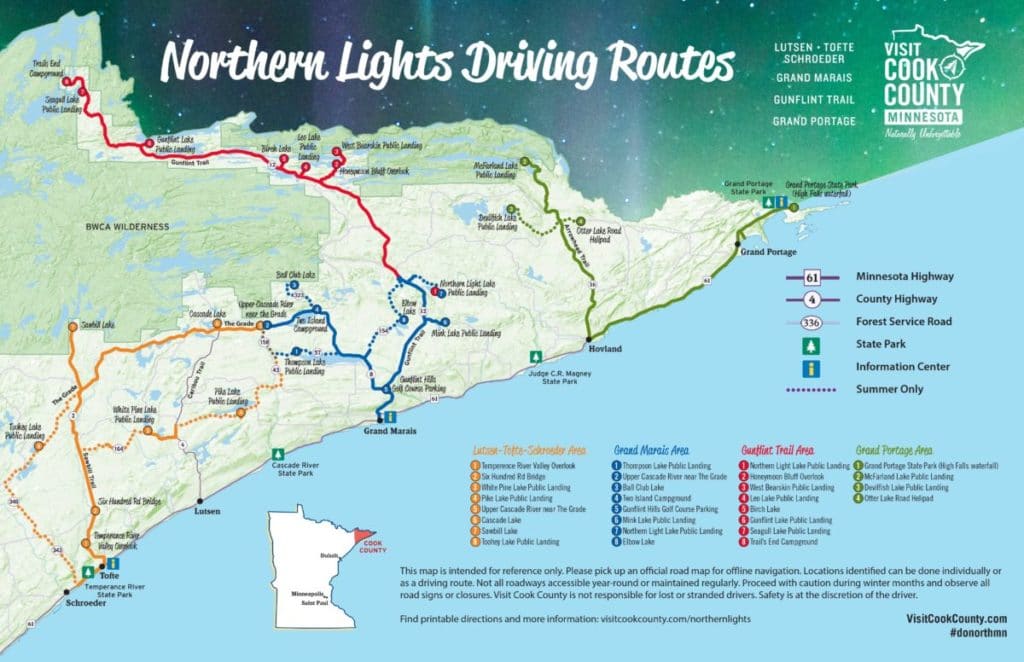
Cook County, which includes Grand Marais and the eastern Superior National Forest, hosted a Dark Sky Symposium in December 2018, and the region’s nature photographers often capture its starry skies and northern lights. Explore Minnesota offers a guide to when, where, and how to to search for the northern lights, and attempts to explain the “why.”
“Because when the solar wind blows just right, and the sky is clear, you’ll come face-to-face with a phenomenon that humans have been yearning to capture and understand ever since we first looked toward the stars: aurora borealis, the northern lights,” writes Brian Fanelli. “There’s nothing quite like it, and no matter how much time you spend chasing the northern lights, it’s always worth it.”
Provincial parks across Ontario typically offer Star Parties each year, including past events at Quetico Provincial Park, which hosted an astronomy weekend in August 2019.
Celestial scenery
This month offers some bright night sights. The planet Venus, which is Earth’s neighbor nearer the sun, is currently the second-brightest object in the night sky (after the moon), and April is when it’s most visible. The planet can be so unbelievably bright that NASA reports Venus is often reported as a UFO.
On April 28, Venus will reach its apex in the western sky, and its brightest phase. It will then be more than 16 times brighter than the brightest star in the sky. At the same time, the moon will only be at about a quarter-phase, so Venus will be highly visible.
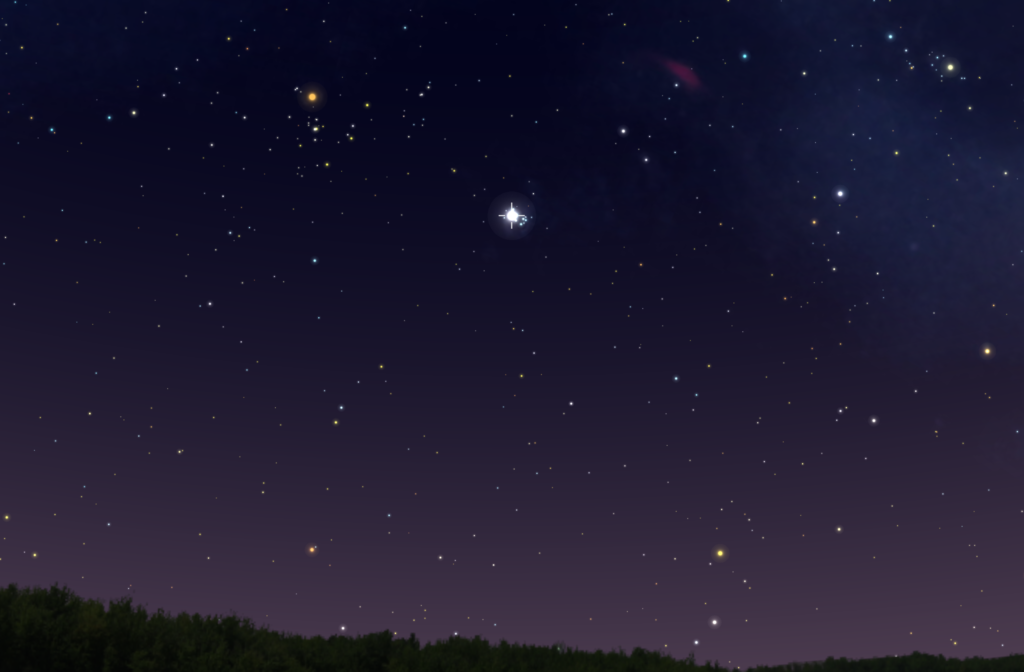
In fact, it will be so bright that viewers should be able to see significant detail, especially with binoculars or a small telescope.
“On [April 27], the cloud-covered planet will present a crescent shape, not unlike our Moon between new and first quarter. This will be obvious even in a small telescope,” writes the Royal Astronomical Society of Canada. “People with better than 20-20 vision should be able to detect the size and shape of Venus.”
Meanwhile, the Lyrids Meteor Shower peaked this month, and may continue through the end of April. It could create 10 to 15 meteors per hour visible from northern latitudes. The event is also known for creating “fireballs” that shoot across the sky.
Protecting darkness
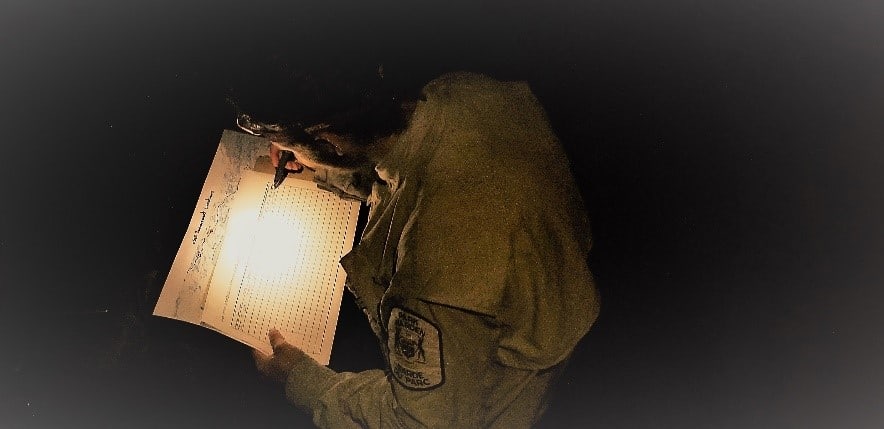
Dark night skies are increasingly threatened by more and more outdoor lighting, even though necessary lighting can usually be accomplished without significantly adding to light pollution.
Not only does excess lighting obscure the wonders of the night sky, it also has been shown to be harmful to many species of wildlife, as well as human health.
“Predators use light to hunt, and prey species use darkness as cover,” German light pollution researcher Christopher Kyba said, according to the IDA. “Near cities, cloudy skies are now hundreds, or even thousands of times brighter than they were 200 years ago. We are only beginning to learn what a drastic effect this has had on nocturnal ecology.”
Government agencies and other people and organizations in both Minnesota and Ontario are currently working toward designation of several popular public lands to be designated as an official “Dark Sky Region.” The designation recognizes areas that have very dark skies, and communities which are committed to reducing light pollution and preserving their views of the stars and other sights.
The designation comes from the International Dark Association. The regional groups are working together through the Heart of the Continent Partnership to designate Voyageurs National Park, the Boundary Waters Canoe Area Wilderness, and Quetico, La Verendrye and Pigeon River Provincial Parks.
“The natural night is a resource that can be maintained with simple steps. As part of the designation process the agencies will do an assessment of their facilities and identify how to reduce impacts from our exterior lighting over the next few years,” said Bob DeGross, superintendent of Voyageurs National Park. “The designation has no requirements for individuals or communities to make changes, but it does start a conversation as to the benefit of maintaining the resource and the cost savings associated with potentially reducing lighting when possible”.
In addition to assessing and updating outdoor lighting at public facilities, and promoting the idea to neighboring communities, dark sky stewards are also doing the essential work of accurately measuring the current level of darkness found in the skies above canoe country.
“Experiencing the night sky provides perspective, inspiration, and leads us to reflect on our humanity and place in the universe,” the IDA writes. “The history of scientific discovery and even human curiosity itself is indebted to the natural night sky.”
More information
- Stellar Skies & Northern Lights Illuminate the North Star State – Explore Minnesota
- Northern Lights – Voyageurs National Park
- Eyes on the skies, April – Ontario Parks Blog
- International Dark Sky Week
- Starry Skies – Preserving the starry skies in the Heart of the Continent
- Junior Ranger Night Explorer – Voyageurs National Park (PDF)
